Hip to Gable Loft Conversion: Maximize Space & Value
If you’re considering a loft conversion to add extra space to your home, you’ve likely come across various types, including the popular hip to gable loft conversion. This type of conversion is especially suitable for homeowners with a hipped roof who want to maximize their loft space. Unlike a dormer loft conversion, which extends out from the existing roof, a hip to gable conversion essentially changes the shape of the roof to increase space.
Understanding the nuances of this conversion type is crucial, especially when it comes to planning permission and building regulations. While some loft conversions fall under permitted development rights, meaning they don’t require planning permission, others might need a lawful development certificate. The type of property you own, be it detached or semi-detached, can also influence the feasibility and cost of your loft conversion project.
In this comprehensive guide, we’ll delve into everything you need to know about hip to gable loft conversions, from planning permissions and building regulations to costs and timeframes. Whether you’re a seasoned homeowner or new to the world of home extensions, this article aims to be your one-stop resource. So, let’s get started!
What is a Hip to Gable Loft Conversion?
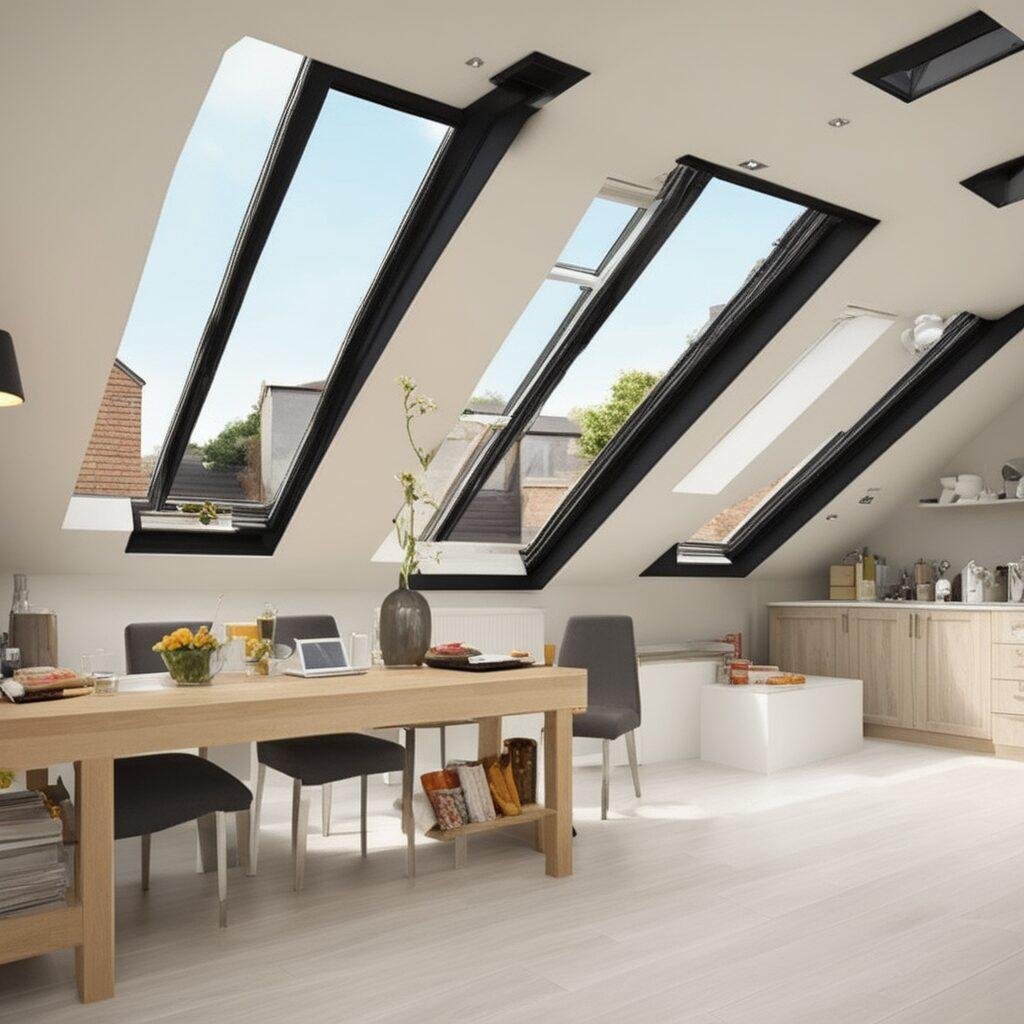

A hip to gable loft conversion is one of the most common types of loft conversions, particularly favored by homeowners with hipped roofs. In a hipped roof, all sides slope downwards to the walls, limiting the usable loft space. This conversion extends the hip roof into a gable roof, essentially converting the sloping (hipped) side of the roof into a flat (gable) side. This change significantly increases the floor space and head height, offering more room for a new loft space.
The process involves extending the existing roof to create a vertical gable wall, effectively replacing the sloping roof. This type of conversion is especially popular in semi-detached and detached houses, as it requires a free sloping side roof. If you’re looking to convert your existing loft into a more functional living space, a hip to gable conversion may be the ideal choice for you.
However, it’s essential to note that not all properties are suitable for this type of conversion. Terrace houses and homes in conservation areas may face restrictions. Moreover, the shape of the roof and the existing first floor can also impact the feasibility of the project.
Here are some key benefits of choosing a hip to gable loft conversion:
Increased Floor Space: One of the most significant advantages is the increase in usable floor space. You can expect to add up to 50 cubic metres in detached properties and 40 cubic metres in semi-detached or terraced homes.
Added Head Height: The conversion extends the roof slope, providing additional head height, which is particularly beneficial if you plan to add new loft stairs.
Enhanced Property Value: Such conversions often add value to your home, making it a worthwhile investment for any homeowner.
Before you decide to build a hip to gable, it’s crucial to consult professionals for a thorough evaluation of your property and to understand if you require planning permission.
Why Choose a Hip to Gable Loft Conversion?
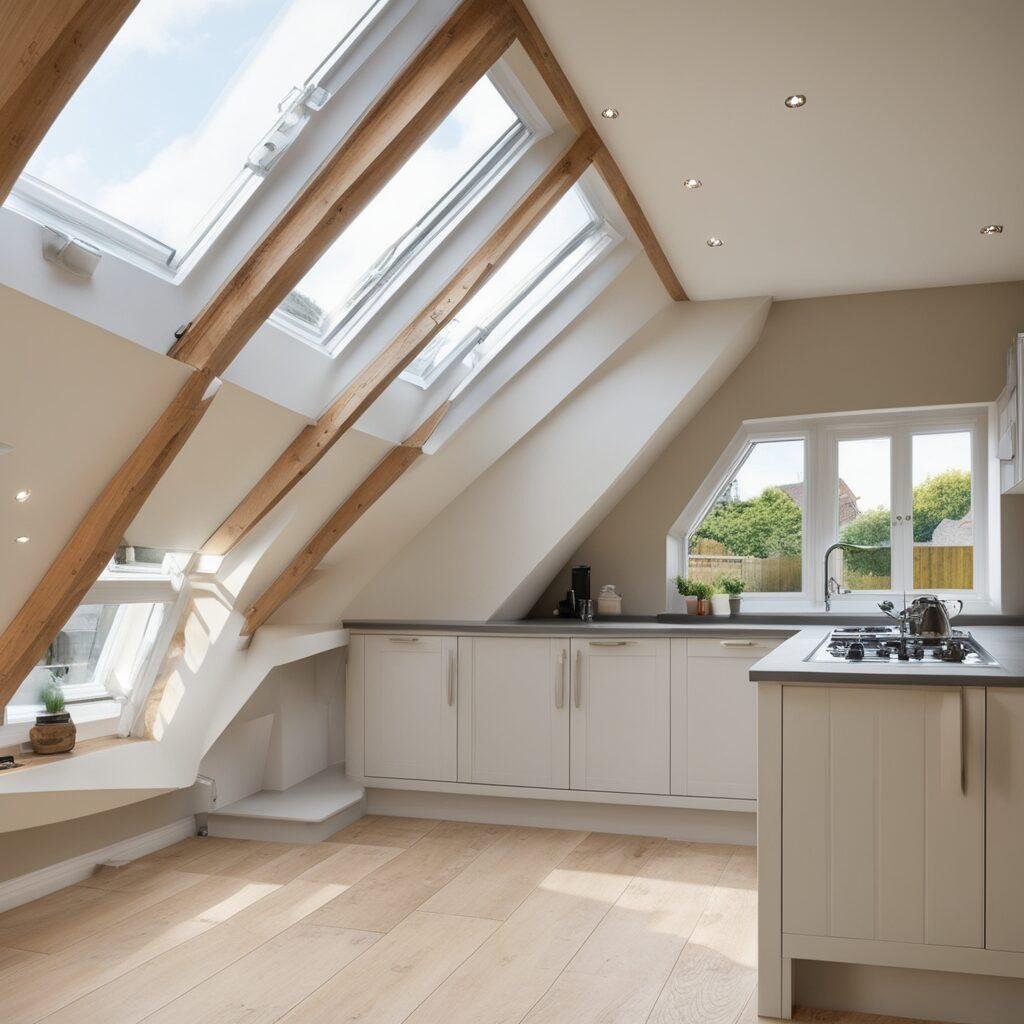

When it comes to adding extra space to your home, a loft conversion is often one of the most cost-effective and less disruptive options. Among the various types of loft conversion, the hip to gable stands out for several reasons. This section aims to shed light on why you might choose a hip to gable conversion over other types like dormer or mansard loft conversions.
More Usable Space
The primary reason homeowners opt for a hip to gable conversion is the significant increase in usable floor space. Unlike a dormer conversion, which only extends outward, a hip to gable conversion changes the shape of the roof, maximizing the space in the loft. This is particularly beneficial if you have a hipped roof, which naturally offers less room.
Versatility
The added space in your home can serve various purposes, from an extra bedroom to a home office or even a cozy loft room. The new loft space can be customized to fit your specific needs, making it a versatile option.
Suitable for Detached and Semi Detached Houses
Hip to gable conversions are ideal for detached and semi-detached houses. These types of properties usually have the necessary roof space and existing roof slope to accommodate the conversion, making the process relatively straightforward.
Adds Value to Your Home
One of the less obvious but equally important benefits is the potential increase in your property’s value. A well-executed hip to gable conversion can significantly add value to your home, making it a wise investment for the future.
Lower Costs
While the gable loft conversion cost can vary based on various factors like location and size, it’s generally more affordable than a mansard loft conversion. You can expect to pay anywhere from £20,000 to £50,000 based on the complexity of the project.
Before diving into this type of project, it’s crucial to consult a loft conversion company for a detailed quote and timeline, as the time it takes can vary. Generally, you can expect a hip to gable loft conversion to take anywhere from 6 to 12 weeks.
Planning Permission for a Hip to Gable Loft Conversion


Navigating the maze of planning permission can be one of the most daunting aspects of any home improvement project. When it comes to a hip to gable loft conversion, understanding the legal requirements is crucial to ensure your project runs smoothly. So, let’s delve into the nitty-gritty of planning permissions and how they apply to your loft conversion project.
What is Planning Permission?
Planning permission is a formal approval from your local authority, allowing you to proceed with building or altering a structure. For more information on planning permissions, you can visit the Planning Portal. For loft conversions, this is often a key consideration, especially if your project involves significant changes to the existing roof slope or the rear of the property.
Do You Need Planning Permission?
The need for planning permission largely depends on whether your project falls under permitted development rights. These rights allow homeowners to make certain changes to their property without the need for formal planning permission. However, there are limitations on floor space and height, usually capped at 50 cubic metres for detached houses and 40 cubic metres for semi-detached or terraced houses.
Exceptions and Special Cases
If your property is in a conservation area or is a listed building, you will likely need to apply for planning permission. Additionally, if the conversion involves extending or altering the roof space significantly, formal permission is usually required.
Lawful Development Certificate
Even if your project falls under permitted development, it’s advisable to apply for a lawful development certificate. This document serves as proof that your project complies with all building regulations, saving you potential legal headaches in the future.
How to Apply
Applying for planning permission involves submitting detailed design and build plans to your local authority, usually accompanied by a fee. The process can take up to 8 weeks, so it’s best to plan ahead.
What if You Don't Comply?
Failure to obtain the necessary permissions can result in a planning breach, leading to fines and even requiring you to undo the changes made. Therefore, it’s crucial to consult professionals to determine whether you require planning permission for your hip to gable loft conversion project.
Do All Loft Conversions Require Planning Permission?
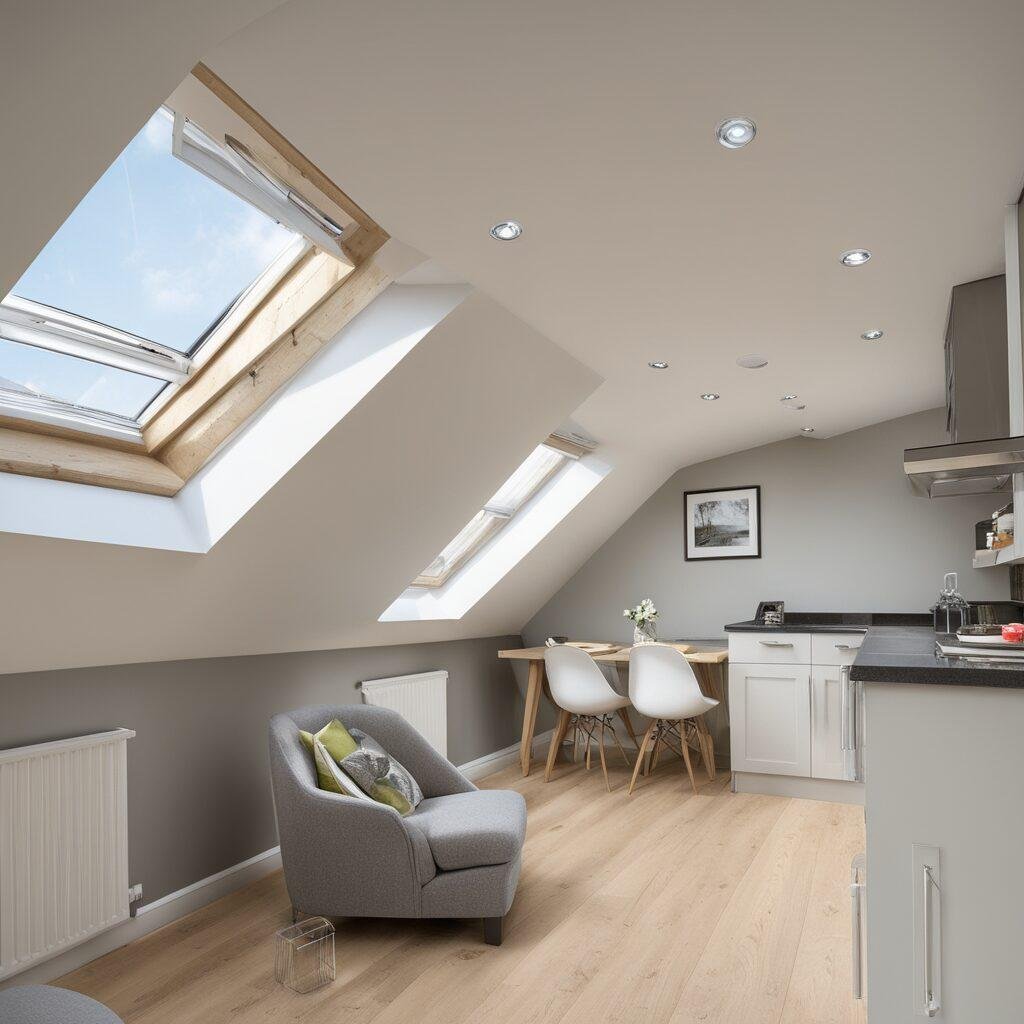

The question of whether you require planning permission for a loft conversion is a common concern for many homeowners. While we’ve touched on planning permission for a hip to gable loft conversion, it’s essential to understand that not all loft conversions are the same. Different types of loft conversion may have varying requirements when it comes to planning permission and building regulations.
General Rules
As a general rule, many loft conversions are considered permitted development, meaning they don’t require formal planning permission. However, this is subject to several conditions and limitations, such as the size of the extension and the type of property you own. For instance, detached properties often have more leeway compared to semi-detached houses or terraces.
Special Cases
There are specific scenarios where you will need to apply for planning permission:
- If your property is in a conservation area or is a listed building
- If the conversion will exceed the existing roof slope
- If you plan to include a balcony or terrace
Permitted Development Rights
If your project falls under permitted development rights, you can proceed without formal planning permission. However, it’s advisable to obtain a lawful development certificate to confirm that your project complies with all local building regulations.
Floor Space Considerations
The amount of floor space you plan to add can also impact whether you need planning permission. Generally, you can add up to 50 cubic metres of additional space in detached houses and 40 cubic metres in semi-detached or terraced houses without requiring permission.
When to Consult a Professional
Given the complexities involved, it’s always a good idea to consult a loft conversion company or a structural engineer to assess your specific situation. They can provide expert advice on whether your loft conversion must adhere to specific planning permissions or if it falls under permitted development.
The Role of Building Regulation in Hip to Gable Loft Conversion


Understanding building regulations is another critical aspect of any loft conversion project, including a hip to gable loft conversion. While planning permission focuses on the impact of your project on the surrounding environment and neighbors, building regulations ensure that the construction work is safe, energy-efficient, and accessible.
What Do Building Regulations Cover?
Building regulations are comprehensive guidelines that cover various aspects of construction, such as:
- Structural Integrity: Ensuring the existing loft and new construction can withstand the weight and pressure.
- Fire Safety: Requirements for fire-resistant materials and fire escape routes, including new loft stairs.
- Energy Efficiency: Insulation standards to make sure the new loft space is energy-efficient.
- Accessibility: Regulations around head height, staircase design, and other factors to ensure the loft area is accessible.
Importance of Compliance
Failing to comply with building regulations can result in hefty fines and may even require you to undo the work. Therefore, it’s crucial to understand these regulations and how they apply to your hip to gable loft conversion project.
How to Comply
Compliance usually involves multiple inspections throughout the conversion process. A structural engineer or a certified loft conversion company can guide you through these inspections, ensuring every aspect of the project, from roof dormer designs to floor space, meets the required standards.
Certificates and Approvals
Upon successful inspection, you’ll receive a completion certificate, confirming that the project complies with all relevant building regulations. This certificate is crucial when you sell your home as it assures potential buyers that the loft conversion is a type of home improvement that meets legal standards.
Final Thoughts
Building regulations may seem like a bureaucratic hurdle, but they are essential for ensuring the safety and quality of your hip to gable loft conversion. By adhering to these standards, you not only make your home safer but also add genuine value to your property.
The Anatomy of a Hip to Gable Roof
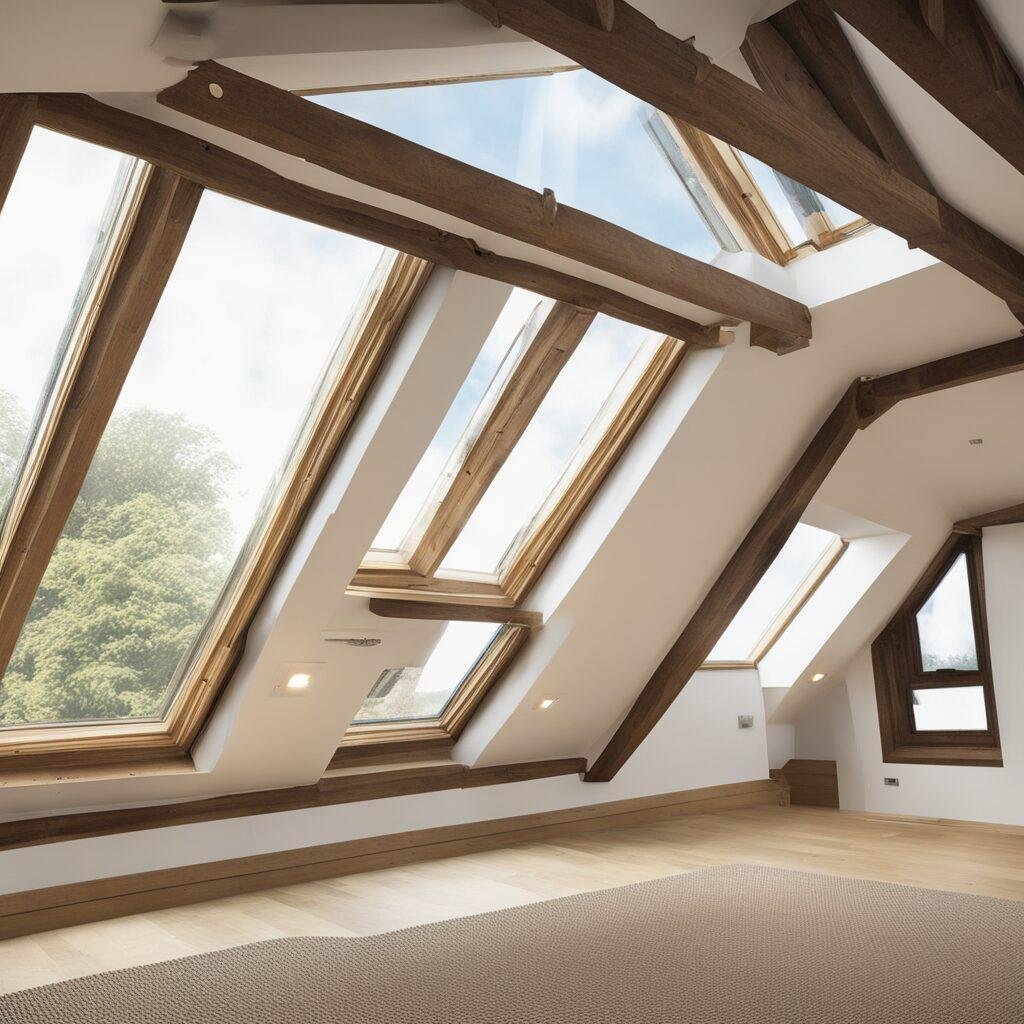

When embarking on a hip to gable loft conversion, understanding the structure of the roof is crucial. The roof is more than just a cover over your head; it’s a complex structure that plays a pivotal role in your home’s integrity and the success of your loft conversion project. In this section, we’ll dissect the anatomy of a hip to gable roof to give you a clearer understanding of what’s involved.
What Makes Up a Hip to Gable Roof?
A hip to gable roof involves transforming an existing hipped roof into a gable roof. In a hipped roof, all sides slope downwards towards the walls, whereas a gable roof has flat sides or gable ends. The conversion extends one or more of these sloping sides to create a vertical wall, known as the gable wall.
Materials Commonly Used
The materials used in constructing a hip to gable roof can vary, but they often include:
- Timber for the roof structure
- Concrete tiles or slate for the roofing
- Bricks or blocks for the gable end
Roof Slope and Its Importance
The roof slope is a critical factor in a hip to gable conversion. The slope determines how much additional living space can be created. A steeper slope usually means more room, but it also might require more extensive structural changes.
Key Components
Understanding the key components of a hip to gable roof can help you better plan your project. These include:
- Hip Roof: The existing roof with sloping sides
- Gable End: The new vertical wall replacing one of the sloping sides
- Ridge Board: The horizontal timber connecting the top of the gable end to the existing roof
Measurements to Consider
When planning your hip to gable conversion, several measurements are crucial:
- Head Height: The available height from floor to ceiling
- Roof Pitch: The angle of the existing roof slope
- Floor Space: The amount of usable space that will be created, often measured in cubic metres
The Extension Process: From Hip to Gable


The journey from a hipped roof to a gable roof involves a series of well-coordinated steps. This extension process is the heart of your hip to gable loft conversion, and understanding it can help you manage expectations and make informed decisions. In this section, we’ll walk you through the typical steps involved in converting your roof from hip to gable.
Initial Assessment
The first step is an initial assessment by a qualified structural engineer or a loft conversion company. They will evaluate the existing roof, loft space, and structural integrity to determine the feasibility of the project.
Design and Planning
Once the initial assessment is complete, the next step is the design and build phase. This involves creating detailed architectural plans, which will also be used for obtaining any necessary planning permission or building regulation approvals.
Structural Changes
The actual construction begins with making structural changes to the existing roof slope. This often involves removing the hip roof and constructing a gable wall in its place.
Timeframe: How Long Does a Hip to Gable Loft Conversion Take?
The duration of the project can vary based on its complexity and size. However, a typical hip to gable conversion takes between 6 to 12 weeks. It’s essential to have a realistic timeframe to manage your expectations and plan accordingly.
Roofing and Insulation
Once the structural changes are complete, the next steps involve roofing and insulation. The type of materials used can impact the project’s cost and timeframe.
Interior Work
The final phase involves the interior work, including installing a staircase, electrical work, and any other finishing touches to make the new loft space usable.
Final Inspection
Before the project is considered complete, a final inspection is usually required to ensure that all work complies with building regulations. Upon successful inspection, you’ll receive a completion certificate.
Cost Considerations
The gable loft conversion cost can vary widely based on the project’s complexity, location, and materials used. It’s crucial to have a detailed budget and possibly a contingency fund for any unexpected costs.
Dormer vs. Hip to Gable Loft Conversion


When it comes to expanding your loft space, the two most common types of conversions are dormer and hip to gable. While both aim to increase the usable floor space and head height in your loft, they differ in structure, cost, and suitability for different types of homes. In this section, we’ll compare these two popular options to help you make an informed decision.
Structural Differences
- Dormer: Involves extending out from the existing roof slope, usually at the rear of the property, to create additional space. The extension has a flat roof, commonly referred to as a flat roof rear dormer.
- Hip to Gable: Transforms a hipped roof into a gable roof by extending the sloping side to create a vertical gable wall.
Space Considerations
- Dormer: Adds space but is generally less expansive than a hip to gable conversion. Suitable for smaller extensions like a small dormer for a bathroom.
- Hip to Gable: Maximizes the space in your loft by changing the roof’s structure, making it ideal for larger projects like additional bedrooms.
Cost Implications
- Dormer: Generally less expensive but offers less additional space. You can expect to pay around £20,000 to £30,000.
- Hip to Gable: More expensive due to the structural changes involved. Costs can range from £30,000 to £50,000, depending on various factors like location and materials.
Planning Permission and Regulations
- Dormer: Usually falls under permitted development rights but may require planning permission if the dormer extension is large or if the property is in a conservation area.
Hip to Gable: Often requires planning permission, especially for semi-detached and terraced houses. Always advisable to check with local authorities.
Timeframe
- Dormer: Typically quicker to complete, ranging from 4 to 8 weeks.
Hip to Gable: Takes longer due to the structural changes, usually between 6 to 12 weeks.
Suitability
- Dormer: More versatile and can be added to various types of loft.
Hip to Gable: Best suited for detached and semi-detached houses with hipped roofs.
Cost Breakdown: Gable Loft Conversion Cost


Overview of Costs
A hip to gable loft conversion in the UK typically costs around £45,000. However, the price can range from £40,000 to £65,000 depending on various factors. The project usually takes about 6-8 weeks to complete.
Factors Affecting Cost
- Size of Conversion: Larger conversions require more materials and labor, increasing the overall cost.
- Window Choices: Dormer windows are more expensive than Velux style windows.
- Plumbing Costs: More plumbing work will increase the overall cost.
- Internal Walls: Adding internal walls for room separation will also add to the cost.
- Electricity Costs: The number of electrical sockets and lights can affect the cost.
Supply Costs
- Joinery: £3500-£4000
- Staircase: £1800-£2200
- Windows: £200-£400 per window
- Insulation: £5-£25 per square meter
- Structural beams, joists, and masonry: £1500-£4000
- Electrics: £700-£1000
Additional Costs
- Light fittings: £80-£150
- Fitting a radiator: £180-£240
- Replacing roof tiles: £180-£200
- Architect costs: £500-£1200
Labour Costs
The labor cost for a hip to gable loft conversion is around £20,000-£35,000. This involves various tradespeople like builders, tilers, plumbers, electricians, and decorators.
The Need for a Structural Engineer in Your Gable Loft Conversion Project
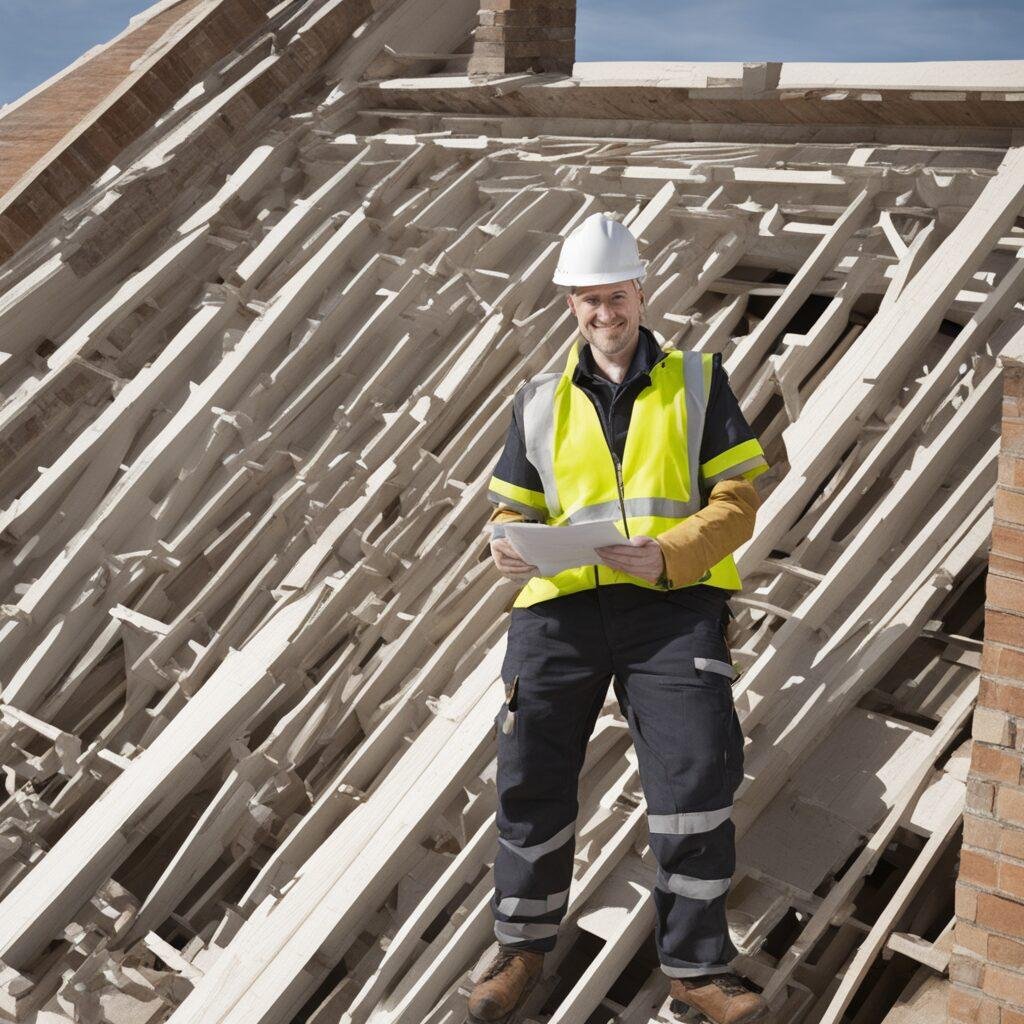

When embarking on a hip to gable loft conversion, one professional you can’t afford to overlook is a structural engineer. Their expertise is invaluable in ensuring that your project is not only structurally sound but also compliant with all building regulations.
Why a Structural Engineer is Indispensable
A loft conversion is more than just adding a new room; it involves intricate structural changes that require specialized knowledge. A structural engineer will assess your loft’s current state and provide crucial insights into what can and can’t be done. They’ll also size any structural beams required, ensuring that the new space is both safe and functional.
What to Look for in a Structural Engineer
- Experience: Choose an engineer with a proven track record in loft conversions.
- Certification: Make sure they are fully certified and up-to-date with building regulations.
- Consultation: An initial consultation can provide valuable insights into your project’s feasibility.
The Added Value
Engaging a structural engineer might seem like an additional cost, but the value they bring is immense. From ensuring safety to potentially increasing your property’s value, their role is pivotal.
Conclusion: Making the Right Choice for Your Home


As we’ve explored throughout this comprehensive guide, a hip to gable loft conversion offers a plethora of benefits, from maximizing space in your loft to adding significant value to your property. However, it’s not a one-size-fits-all solution. The type of property you own, your budget, and your specific needs all play a crucial role in determining whether this is the right option for you.
Key Takeaways
- Planning Permission: Always check whether you require planning permission or if your project falls under permitted development rights. When in doubt, consult a professional.
- Building Regulations: Compliance with building regulations is non-negotiable. Make sure your project meets all the necessary safety and quality standards.
- Cost: While a hip to gable conversion can be more expensive than other types, the added space and property value often make it a worthwhile investment.
Timeframe: Be prepared for the project to take anywhere from 6 to 12 weeks, depending on its complexity and any unforeseen challenges.
Final Thoughts
Choosing to convert your loft is a significant decision that requires careful planning and consideration. Whether you opt for a dormer loft conversion or a hip to gable extension, the key to a successful project lies in thorough research and professional guidance.
If you’re looking to add value to your home and create additional living space, a hip to gable loft conversion could be the perfect solution. However, it’s essential to weigh all factors, from building regulations to gable loft conversion cost, to make an informed decision.
By taking the time to understand the intricacies involved, you can ensure that your loft conversion not only meets your immediate needs but also serves as a long-term investment in your property’s future.
Unlock Your Loft Conversion Dream with SECalcs: Your Expert Structural Engineers in the UK
If you’re considering a hip to gable loft conversion and need expert guidance, our structural engineers at SECalcs are here to help. With years of experience and a focus on customer satisfaction, we can make your loft conversion dream a reality.
- Sunday: Closed
- Monday - Thursday: 9AM - 7PM
- Friday: 9AM - 5PM
FAQs
Expect to budget around £40,000 to £50,000 for a standard hip to gable loft conversion. This estimate generally covers essentials like plastering, heating, plumbing, and carpentry but leaves out flooring and internal fixtures. If you’re thinking of adding a bathroom to the mix, be prepared to invest a bit more.
Good news! Most hip to gable loft conversions fall under permitted development rights, sparing you the hassle of traditional planning permission. This streamlines the process and eliminates much of the uncertainty that comes with seeking approvals.
While opting for a double hip to gable conversion will indeed cost more than a single, it won’t necessarily double your expenses. A lot of the work required for a double conversion overlaps with that of a single, making it a cost-effective way to maximize space.
The standout advantage of a hip to gable conversion is the significant increase in usable space it offers. By replacing a sloping roof with a partially horizontal one, you gain considerable headroom, transforming your loft into a fully habitable area. This not only enhances your living experience but also adds substantial value to your property.



- Head Office: Corwell Lane, Uxbridge, England, UB8 3DE.
- + (44) 07359 267907
- info@structuralengineercalcs.com


